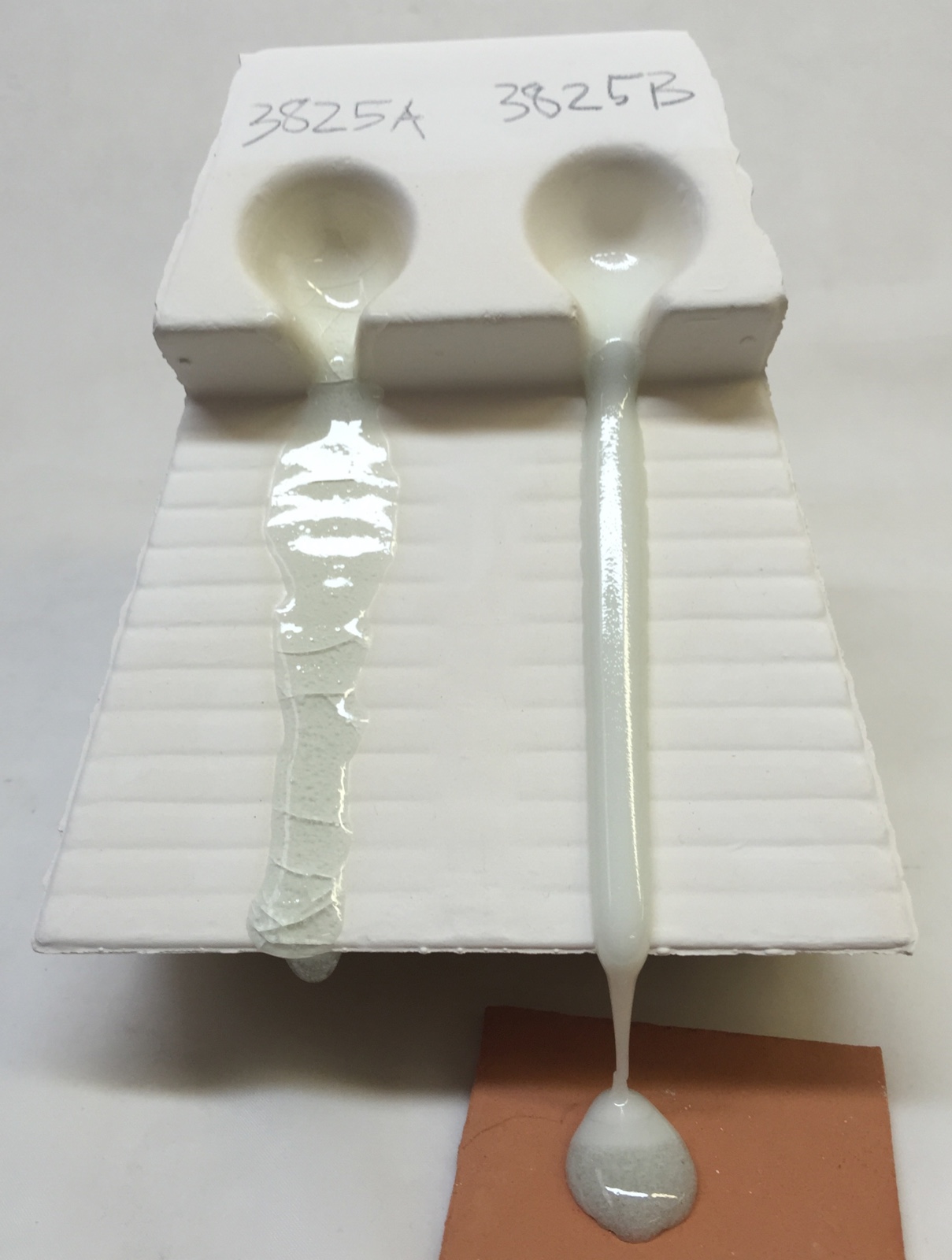Two transparents having opposite melt fluidity/surface tension balances
This insight-live.com/glossary/119">cone 04 flow tester compares two commercial low-fire transparent glazes. Their different approaches to the chemistry are revealed by these melt flows. While 3825B appears to have a higher melt fluidity, its higher surface tension is the real story. This is demonstrated by how the flow meets the runway at a perpendicular angle. Notice that A, by contrast, meanders down the runway in a broad, flat and relatively bubble-free river. Low-fire glazes must pass many more bubbles than their high-temperature counterparts, the low surface tension of A aids in that. A is Amaco LG-10. B is Crysanthos SG213 (Spectrum 700 behaves similarly, although flowing less). Both have advantages and disadvantages and are worth testing in your application.
Pages that reference this post in the Digitalfire Reference Library:
Ulexite, High and low surface tension Frits, Surface tension differences between two glazes, The perfect storm of high surface tension and high LOI: Blisters., Surface Tension, Melt Fluidity, Transparent Glazes, Terra Cotta, Glaze Blisters, Clouding in Ceramic Glazes

This post is one of thousands found in the Digitalfire Reference Database. Most are part of a timeline maintained by Tony Hansen. You can search that timeline on the home page of digitalfire.com.
